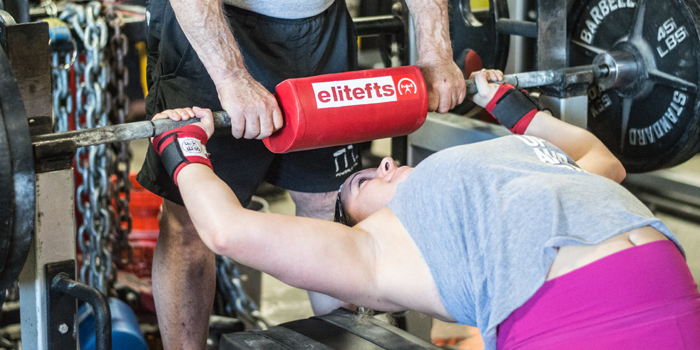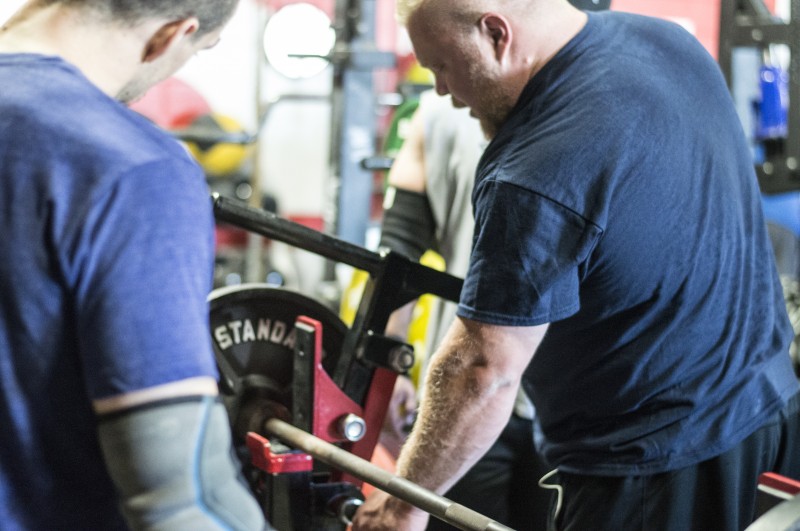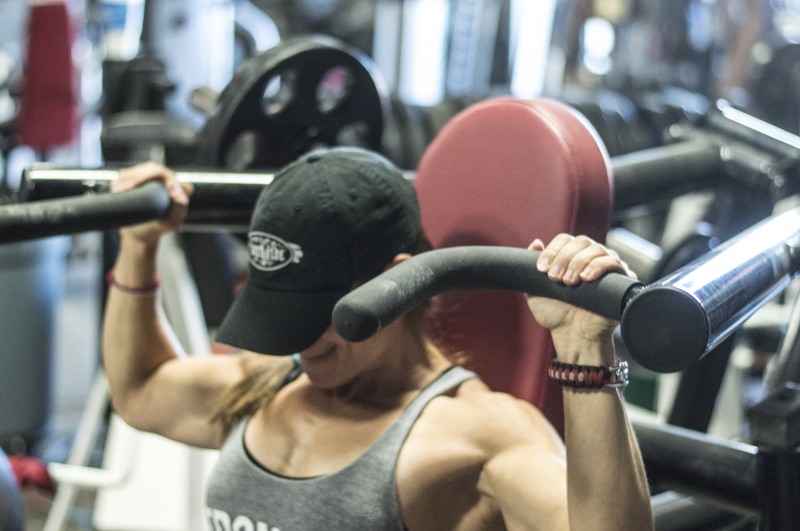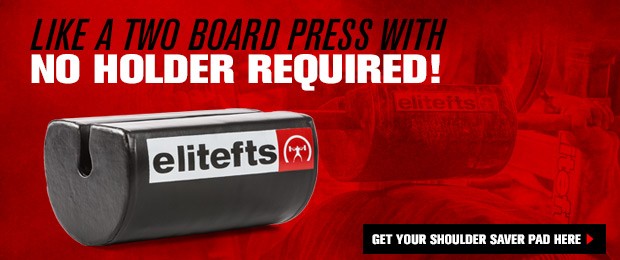
Preface: Made popular by Louie Simmons and Westside Barbell, the Conjugate System of training incorporates variety by rotating special exercises each week to stimulate anatomical adaptation and avoid staleness, plateaus, or accommodation.
Acute Variables of Program Design
Acute variables in program design play a huge role in eliciting a desired training effect. These may include set and rep schemes, muscular time under tension (tempo), rest duration, and intensity, to name a few. But in this article, I am referring specifically to exercise variety and equipment selection. Although other variables can be classified under these two, they are among the top variables for which to account if you wish to continually stimulate muscle growth week after week. So, does this mean that if you apply these two variables you can build jacked traps, a wide back, and diesel forearms? That’s exactly what it means! Applying concepts and methods from the Conjugate System to your program can build a monster of muscle and improve the following components of fitness:
- Muscle recruitment
- Stability
- Strength and power qualities
- Hypertrophy
As I sit here slugging an energy drink and blasting heavy metal, my mind races with thoughts of which exercise to perform first on my next upper body day. Floor presses? Board presses? Pin presses? Or, which piece of equipment I will use: Fat barbell? Multi-grip barbell? Barbell with bands? Barbell with chains? I could go on and on, and that’s exactly the point. You should never run out of exercises or have too many to choose from. There is absolutely no reason to perform standard barbell biceps curls for 3 sets of 10 reps every time you enter the gym on an upper body day. At some point, this will become boring and counterproductive.
RELATED: Four Traps to Avoid When Starting Conjugate Training
The more variety in both exercise and equipment selection, the more capable you are of packing on lean muscle mass.
The purpose of this article is to open your mind to identify the value of being aware of exercise variation and equipment selection in your training. A recurring and non-fluctuating stimulus is proven to cause regression in your body’s ability to produce results. In other words, if you train the same movements with the same exercises using the same equipment week in and week out without any change, at some point your progress will suffer. You will most likely overtrain, burn out, get injured, and lose motivation or all of the above. This is known as accommodation or diminished returns (a dead end). You can avoid accommodation by making subtle modifications in your program to help you stay on track towards your main focus, which should be getting results. After all, the goal is to continue tearing up the gym without tearing up your CNS, right?
In strength training, when you present a new stimulus to your body you provide your body’s physiological response system with a brand new experience and challenge. When this is accomplished transformations may become evident — bigger, stronger muscle. This is termed physiological adaptation and it is what we want to achieve when striving to build lean muscle mass. Achieving physiological adaptation can be done through manipulating variables in program design, namely the two that were mentioned earlier.
This quote, by Westside Barbell’s Louie Simmons, helps to make a connection between accommodation and adaptation:
“If you were stuck on an island with one book to read, how smart would you be? If I gave you 500 books to read on that island, then how smart do you think you would be?”
Now, most of us could agree on the great sense of accomplishment we gain when it comes to getting into the gym and absolutely crushing it during a grueling workout. For most of the strength and power athletes reading this, that means getting underneath a heavy-ass barbell and moving some serious weight with bad intentions. For others, it may mean something completely different, such as doing burpees until they puke or running eight miles in as little time as possible. Whatever the goal may be, the objective of each training session is to make progress. Period! That’s the bottom line. And if that’s not the bottom line, then you need to reevaluate your program structure, because it is only going to result in you getting injured.
For those seeking maximal strength or optimal performance, it is critical to note that lacking the ability to comprehend and apply science can become detrimental to progress. Stepping into the gym every Monday and performing 3x10 on the bench press with no deviation from week to week will lead to accommodation. It’s a fact and a long-researched topic. Not only will physical appearance and progress suffer, but the damage it can do to one’s cognitive ability has also been researched.
It has been discovered that this type of behavior can hinder one’s interest in a particular activity due to the dull circumstances and environment. Furthermore, research tells us that when our brain doesn’t experience new stimuli once in a while, things become boring and we begin to regress. Sound familiar? It’s science and human nature. Ever get really excited because you got that new car? Or, you have tons of energy at a bowling alley or a batting cage? It’s because a new stimulus produces excitement and excitement breeds positive adaptation.
Application of Exercise Variation and Equipment Selection
At my gym, programs are planned using a three-week micro-cycle. During these mini cycles, we use similar exercises for the same movements but rotate them to avoid accommodation. Let’s take the bench press, for example. We perform a max effort pressing movement every week to elicit maximal strength. Below is an example of how we manipulate exercise variation. We rotate exercises to avoid accommodation:
Max Effort Training (Work to 1-3 RM for each)
- Week 1 – Barbell Bench Press
- Week 2 – Barbell Incline Bench Press (20-degree incline)
- Week 3 – Barbell Floor Press with Chains
*Note: Beginners can rotate every 2-3 weeks.
The same concept is applied to our supplemental movements. Let’s take a triceps extension, for example. We use a different piece of equipment each week to change the angle of the extension. This is an example of how we manipulate equipment variation. We’ll perform the same movement (triceps extension), but change the equipment to avoid accommodation.
Supplemental (Triceps) Exercises
- Week 1 – Barbell Lying Skull Crushers
- Week 2 – Cable Rope Pushdowns
- Week3 – Dumbbell Overhead Extensions
*Note: Beginners can rotate every 2-3 weeks.
Conclusion
Introducing new stimuli can come in all shapes and sizes including a change in center of gravity, grip, stance, time under tension, reps and sets, etc. However, most acute variables will likely fall under two main categories: exercise variation and equipment selection. Also, we now know through research that proper application of these variables can promote physiological adaptation as we strive to become bigger, stronger, and faster machines.
Lastly, physiological adaptations, although dependent on the form of training and modality taking place, can be in the form of muscle recruitment, stability, strength, hypertrophy and power, each of which cannot be achieved through recurring exercises for extended periods of time. Believe me, I’ve tried and the workouts get boring real fast.
With that being said, take a look at your program over the next few weeks and see where you can manipulate training variables to maximize your progress. I hope this article taught you how to turn your workouts into more effective sessions using variety in both exercise and equipment selection.
Don is the owner and founder of AKP Fitness, a small gym in Hawthorne NJ dedicated to delivering results-driven programs to the community. He can be reached through email at info@akpfit.com or by visiting his website www.akpfit.com.












Keep up the great work!